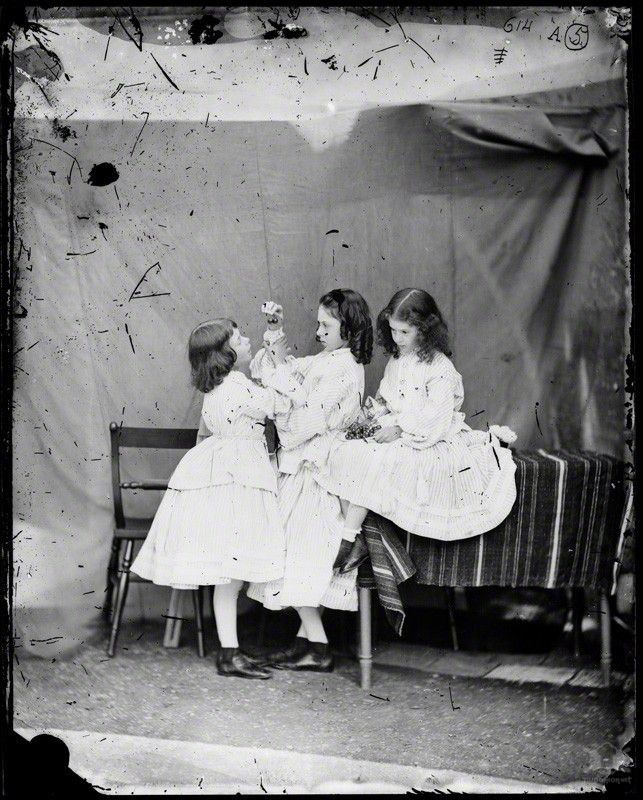“and what is the use of a book”, thought Alice, “without pictures or conversations?”
—Lewis Carroll, Alice’s Adventures in Wonderland
Like Alice, I am very fond of pictures and conversations, which have formed the foundation to my photographic practice; I am a fine art photographer, photography lecturer and master’s student (not forgetting self-confessed crazy cat lady). My photographic practice has always been influenced by my interest in the representation of young women within photography, and over the past six months I have also been investigating their place within the 19th-century archive held at the National Science and Media Museum, Bradford, in particular the work of Lewis Carroll and Julia Margaret Cameron.

Paul Ricoeur believes photographs have a ‘voice’ which ‘speaks’ to the viewer, and states that objects are often sleeping before they are awoken by a researcher. I found that this quote embodied exactly how I felt when accessing the archive. In Wonderland, too, objects were very often sleeping until Alice arrived to wake them up. For me, this perfectly describes my countless trips to the archive: every experience has been special, one few words can explain. As a practitioner who has spent many years reading and researching these works, to hold them, study them, connect with them and have conversations with them embodies everything that is wonderful about archival research.
Yet the links to Wonderland did not stop there.
There were emblems in the photographic works I was looking at too. Symbolism links the sleeping girls in Lewis Carroll’s photography: I was awakening these images and creating a conversation between me and the archival matter, imagining the messages that she would convey to me, ‘she’ being the emblem of an adolescent girl I envision within my work. Alice Liddell—the real Alice—and her sisters are glaring back at me: I feel like I have known her forever without ever getting the chance to meet her, yet now I have, along with many of the imaginary characters Charles Dodgson put on his glass negatives. Each time I have visited the research facility at Bradford I have either found work I had not seen before, or been blown away by the fact that I am connected to a little piece of history, which has now made its own history in my own life.

I started deconstructing these images and the archive itself using social and cultural signifiers, to investigate deeper into the concerns of the young woman. Perceiving the glass negative as my ‘looking glass’, I wanted to fall deeper into this rabbit hole, much as Alice did. The sensuality of the print, its eroticism, was magically caught in the emulsion and that really interested me. I developed this research into creating albumen and salt prints of my own, challenging the strictures of analogue and digital photography. The viewer is drawn into the ideals of objectification and the paradoxes that connect archival matters and interpretive acts.
I have found my time researching within this archive highly enjoyable: disengagement from the outside world and being taken to my very own little Wonderland, just a couple of hours’ train journey from home, makes it an incredibly addictive experience. With a monthly visit, I—unlike Alice—have been able to return whenever I wish.